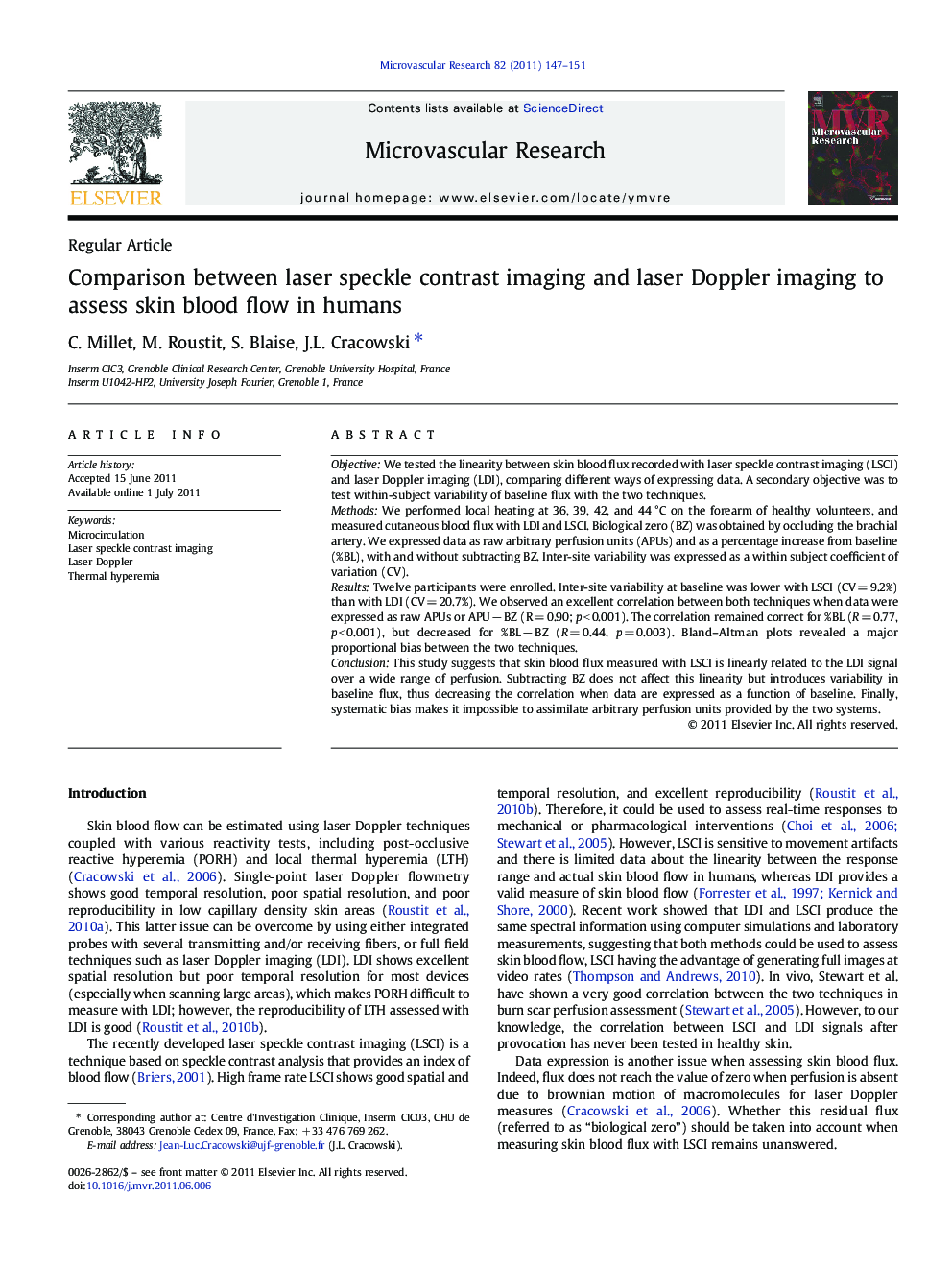| Article ID | Journal | Published Year | Pages | File Type |
|---|---|---|---|---|
| 1994954 | Microvascular Research | 2011 | 5 Pages |
ObjectiveWe tested the linearity between skin blood flux recorded with laser speckle contrast imaging (LSCI) and laser Doppler imaging (LDI), comparing different ways of expressing data. A secondary objective was to test within-subject variability of baseline flux with the two techniques.MethodsWe performed local heating at 36, 39, 42, and 44 °C on the forearm of healthy volunteers, and measured cutaneous blood flux with LDI and LSCI. Biological zero (BZ) was obtained by occluding the brachial artery. We expressed data as raw arbitrary perfusion units (APUs) and as a percentage increase from baseline (%BL), with and without subtracting BZ. Inter-site variability was expressed as a within subject coefficient of variation (CV).ResultsTwelve participants were enrolled. Inter-site variability at baseline was lower with LSCI (CV = 9.2%) than with LDI (CV = 20.7%). We observed an excellent correlation between both techniques when data were expressed as raw APUs or APU − BZ (R = 0.90; p < 0.001). The correlation remained correct for %BL (R = 0.77, p < 0.001), but decreased for %BL − BZ (R = 0.44, p = 0.003). Bland–Altman plots revealed a major proportional bias between the two techniques.ConclusionThis study suggests that skin blood flux measured with LSCI is linearly related to the LDI signal over a wide range of perfusion. Subtracting BZ does not affect this linearity but introduces variability in baseline flux, thus decreasing the correlation when data are expressed as a function of baseline. Finally, systematic bias makes it impossible to assimilate arbitrary perfusion units provided by the two systems.
Graphical abstractFigure optionsDownload full-size imageDownload as PowerPoint slideHighlights► There is an excellent correlation between LSCI and LDI over a wide range of perfusion. ► Biological zero should not be subtracted when expressing data as a function of baseline. ► There is a systematic bias making comparison between the two techniques impossible.
